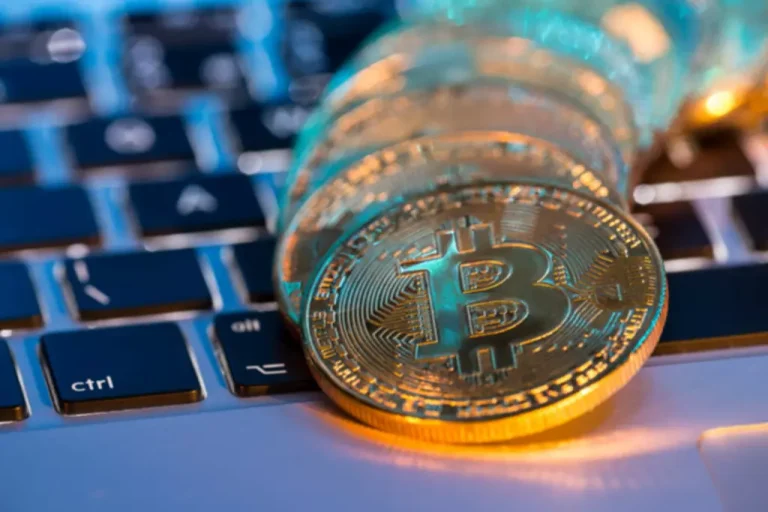How Do Liquidity Pools Work? Defi Explained
An operational crypto liquidity pool must be designed in a means that incentivizes crypto liquidity suppliers to stake their assets in a pool. That’s why most liquidity suppliers earn buying and selling fees and crypto rewards from the exchanges upon which they pool tokens. When a consumer provides a pool with liquidity, the provider is usually rewarded with liquidity provider (LP) tokens.
The major purpose of a liquidity pool in DeFi is to facilitate transactions without a centralized third celebration. Through the use of automated market makers (AMMs) and liquidity pools, trades may be executed automatically because of the pool. Participating in crypto liquidity swimming pools requires taking part in decentralized finance. This usually involves creating an account on a decentralized trade, exchanging a token you could have for an LP token, and locking up the token within the platform.
Cash Ratio
AMM algorithms also maintain market values for the tokens they hold, preserving the value of tokens in relation to a minimum of one another based on the trades taking place within the pool. Each token swap that a liquidity pool facilitates leads to a worth adjustment in accordance with a deterministic pricing algorithm. This mechanism can additionally be called an automated market maker (AMM) and liquidity swimming pools across completely different protocols might use a slightly totally different algorithm. Liquidity swimming pools are crypto assets which would possibly be kept to facilitate the buying and selling of trading pairs on decentralized exchanges. As we’ve talked about, a liquidity pool is a bunch of funds deposited into a sensible contract by liquidity suppliers. When you’re executing a commerce on an AMM, you don’t have a counterparty within the traditional sense.
Liquidity pools are the spine of many decentralized exchanges (DEX), similar to Uniswap. Users referred to as liquidity providers (LP) add an equal worth of two tokens in a pool to create a market. In exchange for providing their funds, they earn buying and selling fees from the trades that happen of their pool, proportional to their share of the entire liquidity.
A Comparative Evaluation Of Centralized Vs Decentralized Exchanges
Instead, you’re executing the trade in opposition to the liquidity in the liquidity pool. For the buyer to purchase, there doesn’t have to be a seller at that specific moment, only adequate liquidity in the pool. Liquidity swimming pools are one of the foundational applied sciences behind the current DeFi ecosystem. They are a vital part of automated market makers (AMM), borrow-lend protocols, yield farming, synthetic assets, on-chain insurance, blockchain gaming – the listing goes on.
- A certified professional ought to be consulted prior to making financial selections.
- Other projects iterated on this idea and came up with a couple of fascinating ideas.
- Any seasoned dealer in conventional or crypto markets can inform you in regards to the potential downsides of getting into a market with little liquidity.
- The good contracts that underlay these platforms sometimes have exploitable bugs in them.
- In addition to buying and selling quantity, different elements such as the width of bid-ask spreads, market depth, and order guide information can present further insight into the liquidity of a inventory.
- Constant product models, like Uniswap’s, are the most typical method to building liquidity swimming pools.
They tried to mimic traditional exchanges with order books, and this didn’t work very well. At some level, the invention of a liquidity pool was introduced, giving users an incentive to provide liquidity and removing the necessity to match buyers with sellers utilizing an order guide. Investors, then, will not have to give up unrealized positive aspects for a fast sale. When the unfold between the bid and ask prices tightens, the market is extra liquid; when it grows, the market as an alternative becomes extra illiquid. The liquidity of markets for different assets, similar to derivatives, contracts, currencies, or commodities, often depends on their dimension and how many open exchanges exist for them to be traded on.
In essence, market makers are entities that facilitate buying and selling by all the time prepared to purchase or promote a selected asset. By doing that they supply liquidity, so the customers can at all times trade they usually don’t have to attend for another counterparty to show liquidity pool definition up. It’s an idea borrowed from conventional finance that includes dividing up financial products based mostly on their risks and returns. As you’d anticipate, these merchandise permit LPs to choose out personalized risk and return profiles.
Liquidity Pool Comparisons
When a commerce occurs, the property are exchanged within the pool, and the person’s share of the pool is adjusted accordingly. A liquidity pool contains of tokens, and each pool is used to create a marketplace for the tokens that make up the pool. For example, a liquidity pool can include ETH and an ERC-20 token like USDT, both of which might be available on the change. For each pool created, the primary provider provides the initial worth of obtainable property in the pool. This preliminary liquidity supplier units an equal worth of each tokens to the pool. In standard monetary markets, centralized intermediaries provide liquidity.
Liquidity swimming pools play a major position in offering liquidity in illiquid markets and boosting the DeFi ecosystem. The low liquidity that peer-to-peer exchanges offer can slow down the velocity of transactions in monetary markets. Still, with the assistance of liquidity pools where tokens are locked up in smart contracts, people could make transactions quickly. DeFi protocols allow liquidity providers (LPs) to deposit belongings into liquidity swimming pools.
Ethereumpow
This kind of liquidity investing can routinely put a person’s funds into the very best yielding asset pairs. Platforms like Yearn.finance even automate stability threat choice and returns to maneuver your funds to varied DeFi investments that present liquidity. These tokens are used to initiate cryptocurrency buying and selling by liquidating them. Liquidity swimming pools are broadly relied upon by many decentralized exchanges to increase person participation and facilitate trade. Bancor introduced liquidity swimming pools, but it grew to become widely known when Uniswap adopted it.
In this instance from Uniswap, the value of Token A increases from 1,200 to 1,203.03, which decreases the worth of Token B to 399 to preserve the constant of 3. After the transaction, the liquidity shares are worth three.015 after adding transaction fees. SoFi has no control over the content material, services or products offered nor the safety or privateness of data transmitted to others via their web site. We advocate that you evaluation the privacy policy of the site you are entering.
Potential Dangers
The finer points of simply how liquidity pools work is a extremely technical matter that branches out into numerous subtopics , which are price taking the time to understand. The liquidity pools that we just described are utilized by Uniswap and they are the most primary forms of liquidity pools. Other initiatives iterated on this concept and came up with a couple of fascinating concepts. In its fundamental type, a single liquidity pool holds 2 tokens and every pool creates a model new market for that exact pair of tokens. For trades to happen, both consumers and sellers should converge on the price.

Ok, so now that we perceive why we want liquidity swimming pools in decentralized finance, let’s see how they really work. If you provide liquidity to an AMM, you’ll want to pay attention to a concept known as impermanent loss. In short, it’s a loss in dollar worth in comparability with HODLing when you’re providing liquidity to an AMM.
Constant product fashions, like Uniswap’s, are the most typical method to constructing liquidity pools. No matter how much the two sides go up and down, the product of the weights on both sides stays constant. Similarly, Uniswap and different protocols use the product of two tokens to set the worth.
AMMs fix this problem of restricted liquidity by creating liquidity pools and providing liquidity providers the motivation to produce these pools with assets, all with out the necessity for third-party middlemen. The extra property in a pool and the extra liquidity the pool has, the simpler trading turns into on decentralized exchanges. Unlike traditional finance, which pairs buyers and sellers to complete a transaction, liquidity pools don’t need to connect customers to complete a commerce.



